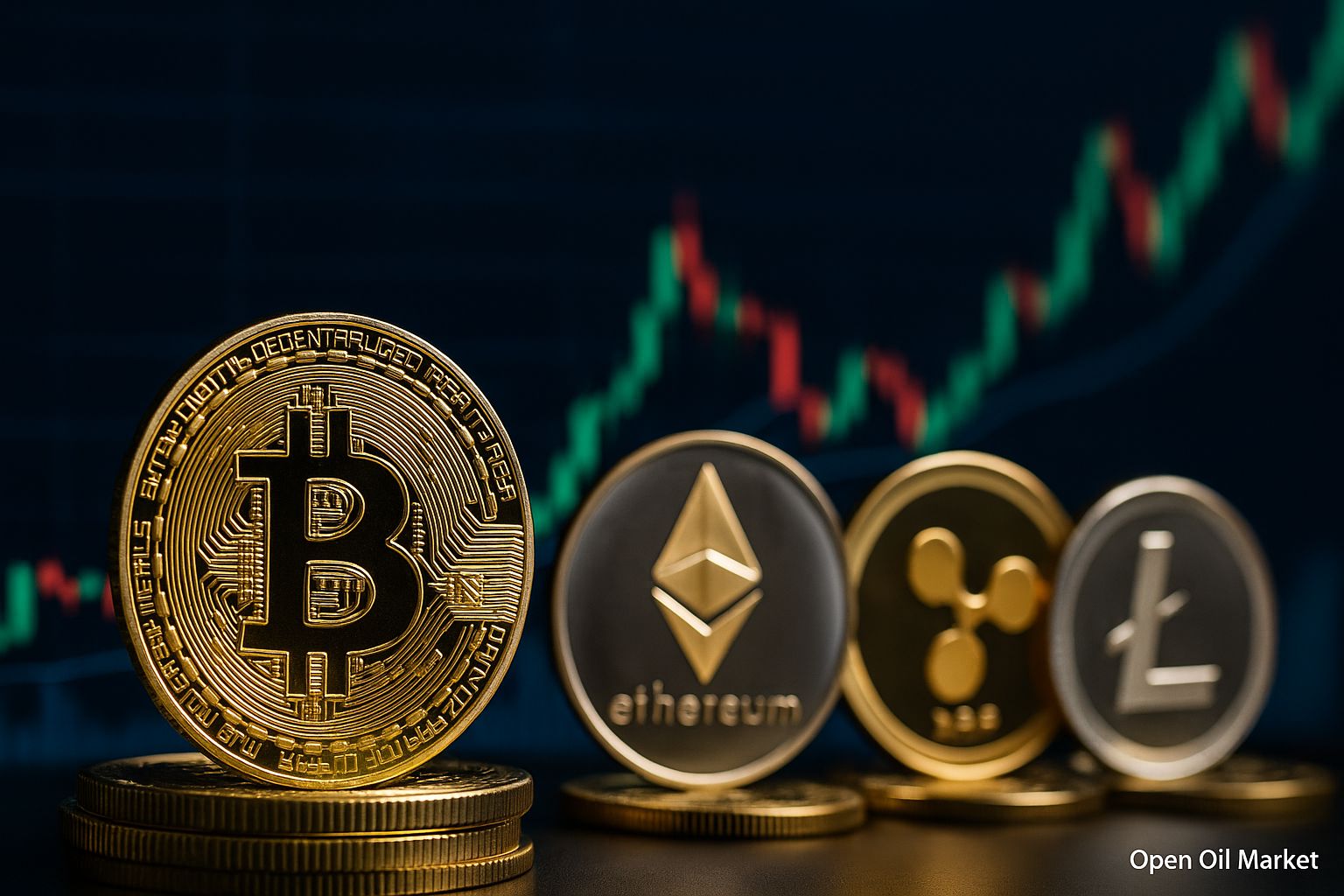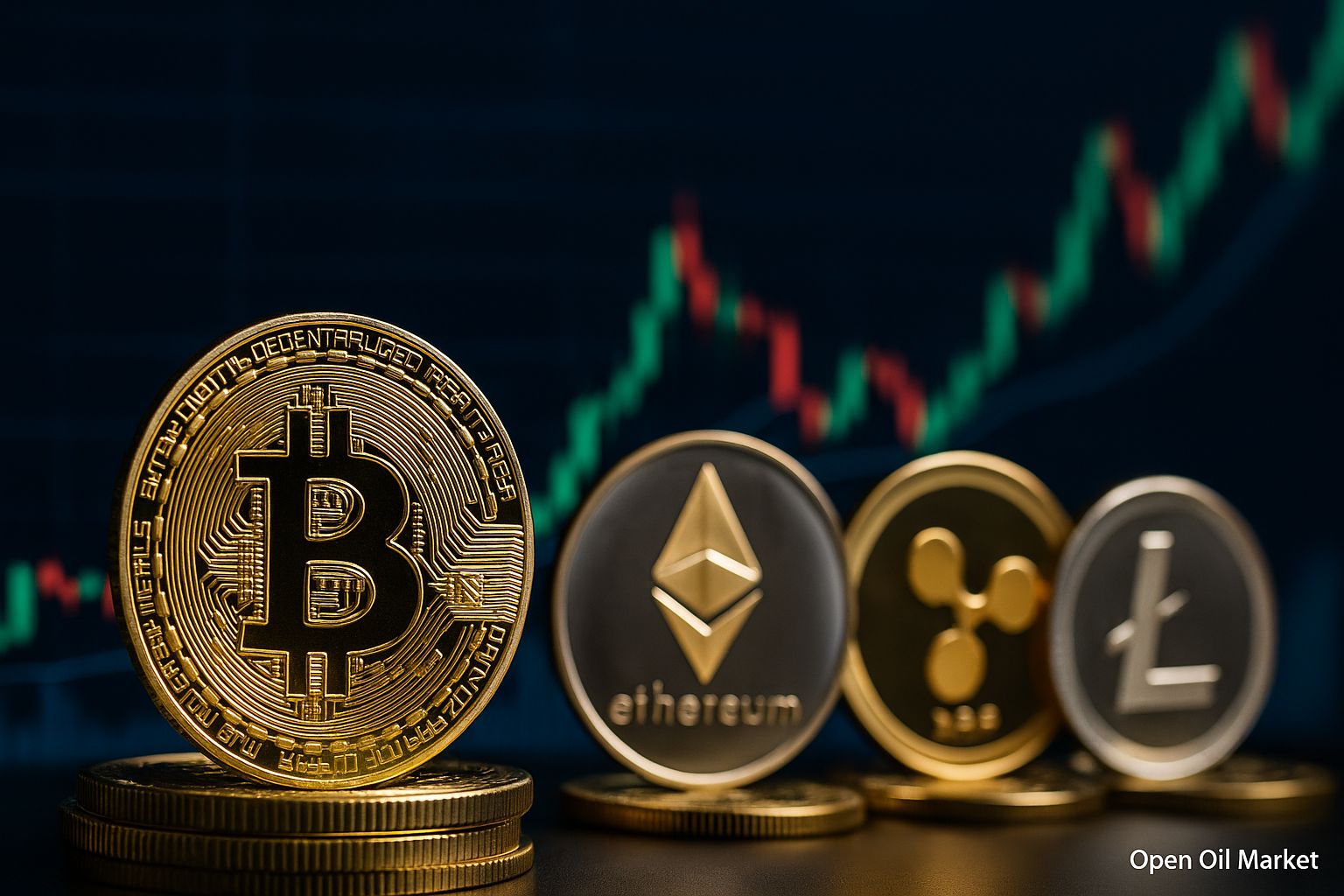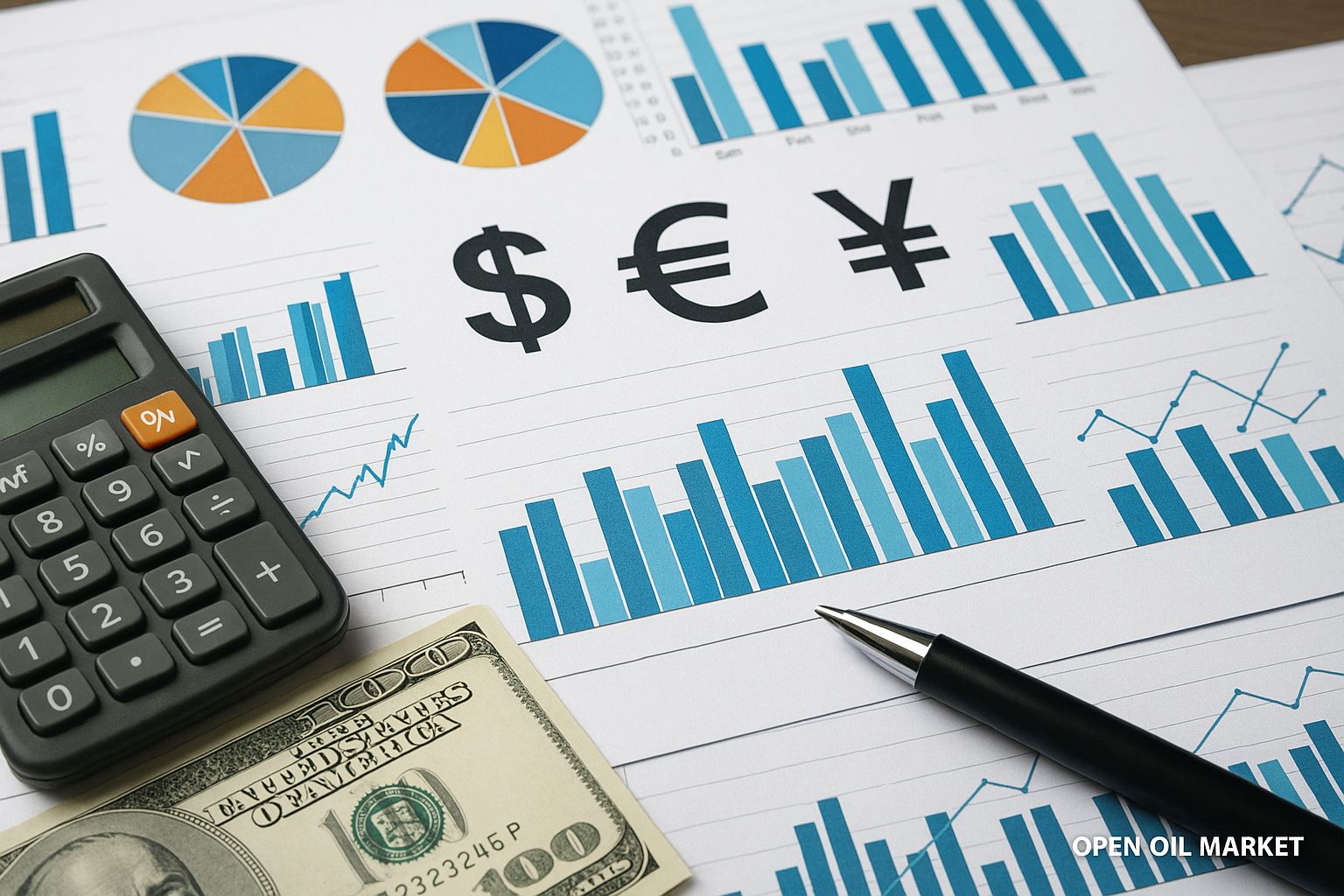
Current Cryptocurrency News as of August 17, 2025: Bitcoin Maintains Historic Levels, Ethereum Approaches All-Time Highs, Altcoins Surge, and Institutional Investments Rise. A Detailed Overview of the Top 10 Cryptocurrencies and Key Events in the Crypto Market.
Current cryptocurrency news as of August 17, 2025: Bitcoin remains near its historic high, Ethereum approaches multi-year peaks, altcoins hold strong positions, the market is consolidating, institutional investments are on the rise, and regulators are introducing new measures in the USA, Europe, Asia, and the CIS.
Market Overview
By the end of the week, following a rapid rally in mid-August, the global cryptocurrency market began to consolidate around record levels. Bitcoin reached approximately $124,000 during Asian trading hours, surpassing its previous record and July’s peak. Following this, a brief correction occurred: on the evening of August 14, Bitcoin fell to around $117,000 due to a statement from the U.S. Treasury, but the market later regained ground, and Bitcoin returned to levels above $119,000. By the weekend, the leading cryptocurrency was trading near $120,000, buoyed by expectations of a forthcoming easing of the Federal Reserve's monetary policy and positive signals from American regulators. Ethereum also displayed strong performance, recently exceeding $4,780, marking its highest price since late 2021, and now trading above $4,600. The total market capitalization of the cryptocurrency market remains over $4 trillion, significantly higher than figures from a year ago.
Bitcoin and Ethereum
Bitcoin continues to lead the market, supported by positive investor sentiment and technical factors. Analysts predict that a strong break above the $125,000 mark could pave the way for further growth to as high as $150,000. Institutional investors are actively increasing their positions in Bitcoin, including through exchange-traded funds (ETFs). Additionally, a recent executive order from the U.S. President allows cryptocurrencies to be included in 401(k) retirement savings plans, expanding demand from both retail and professional participants. The crypto industry is also undergoing a consolidation phase: American exchange Coinbase has completed the acquisition of the Deribit platform—the largest Bitcoin options market. This integration aims to combine spot and derivative trading on a single platform, thereby attracting additional institutional capital.
Ethereum is exhibiting a similar positive trend. After a series of successful protocol upgrades, the price of ETH exceeded $4,700, reaching a record level in recent years. The persistent growth of Bitcoin and Ethereum significantly contributes to the upward momentum of the entire digital asset market.
Altcoins on the Rise
- XRP (Ripple): The price has risen to around $3.10, setting a multi-year high. The asset gained momentum from favorable legal decisions in the U.S. (resolving regulatory uncertainty around XRP) and expectations for new institutional instruments based on the Ripple token.
- Binance Coin (BNB): Reached a new record near $800. The Binance exchange token strengthened amid active growth in platform transactions and the expansion of the BNB Chain ecosystem.
- Solana (SOL): Trading within the range of $170–180. SOL remains a leader in growth due to high transaction speeds and the development of DeFi and NFT projects on the Solana network.
- Cardano (ADA): Holding around $0.75. Although ADA has not shown a sharp jump, the Cardano network is actively developing in 2025 with new smart contracts and decentralized applications being launched.
- Dogecoin (DOGE): The popular "meme" coin is priced around $0.22. DOGE remains in the top 10 by market capitalization; its value is supported by community activity and celebrity mentions, although volatility remains high.
- Tron (TRX): Recently entered the top ten largest cryptocurrencies. The TRON network token is trading around $0.35. The growth stimulus comes from increasing transaction activity and the popularity of stablecoins issued within the TRON ecosystem.
Cryptocurrency Regulation in the USA
The United States has enacted a comprehensive set of laws aimed at regulating the cryptocurrency industry. A separate act has been passed to regulate stablecoins and requires full reserve backing and regular audits. Additionally, the "Clarity Act" has been approved, which clearly delineates the authorities of the Securities and Exchange Commission (SEC) and the Commodity Futures Trading Commission (CFTC) in the realm of digital assets: Bitcoin and Ethereum are classified as commodities, while most other tokens are considered securities. Another new law, the "Anti-CBDC Act," prohibits the U.S. central bank from issuing its own digital currency (CBDC). All these measures increase confidence in the market and facilitate the participation of large investors.
Simultaneously, the U.S. President signed an executive order allowing the inclusion of cryptocurrencies in 401(k) retirement plans. Regulatory authorities have also announced the development of additional rules for digital assets. This regulatory support is already attracting institutional capital and forming a foundation for further growth in the cryptocurrency market.
Europe: Licenses and MiCA
The European Union continues to implement unified rules for the cryptocurrency market. The MiCA (Markets in Crypto-Assets) regulation, which came into effect in 2025, establishes pan-European requirements for token issuers and cryptocurrency exchange licensing. In recent months, several major crypto companies have received authorization to operate across Europe. For instance, the Gemini exchange is awaiting approval for a license in Malta, while Coinbase is preparing to operate in Luxembourg. Meanwhile, some regulators express concern over the rapid pace of licensing in certain countries, fearing a "race to the bottom" in standards. Nevertheless, unified regulation makes Europe more attractive for the crypto business, creating predictable operating conditions in the market.
Asia and Central Asia
Significant changes are occurring in the Asian region. Kazakhstan has launched the first Bitcoin ETF in Central Asia (Fontex Bitcoin ETF), which has been trading on the Astana International Exchange (AIX) since August 13. This fund, with asset custody via BitGo, facilitates investor access to Bitcoin through a familiar exchange instrument and is capable of attracting additional capital to the crypto industry.
Meanwhile, China maintains strict restrictions on private ownership of cryptocurrencies. In contrast, some Asian financial centers are enhancing the integration of digital assets. For example, Hong Kong's regulator recently introduced stricter fund custody standards for licensed crypto exchanges—this step underscores the region's commitment to secure practices and helps position Hong Kong as one of the key centers for digital assets in Asia.
Russia and the CIS
In Russia, regulators continue to tighten control over cryptocurrencies while simultaneously developing their initiatives. Banks are now permitted to offer qualified investors instruments tied to cryptocurrency rates (derivatives and tokenized securities), and the establishment of a limited exchange trading regime for a select group of professionals is under discussion. However, conditions are becoming increasingly stringent for ordinary users: recent amendments to legislation allow banks to block accounts for suspicious P2P operations involving cryptocurrency, and changes to the payment systems law expand the criteria for "high-risk" transactions and intensify liability for money laundering through digital assets.
At the same time, the government is actively promoting the issuance of a digital ruble (the national digital currency is planned for launch in 2026). Additionally, some projects to issue ruble-based stablecoins (e.g., the A7A5 token) are already being used for international transactions circumventing sanctions. In July alone, the transaction volume through such instruments exceeded $40 billion.
Top 10 Most Popular Cryptocurrencies
- Bitcoin (BTC): The first and largest cryptocurrency by market capitalization. Bitcoin is widely seen as "digital gold" and a long-term investment tool due to its limited supply (no more than 21 million coins) and growing acceptance by institutional investors.
- Ethereum (ETH): The second largest cryptocurrency by volume, serving as the foundation for a vast ecosystem of smart contracts. Ethereum supports thousands of decentralized applications (DeFi, NFTs, and more) and has transitioned to a more efficient Proof-of-Stake consensus algorithm. Investors see growth potential for ETH due to planned network scalability and widespread adoption of tokens issued on its platform.
- Tether (USDT): The largest stablecoin pegged to the U.S. dollar. USDT is widely used on cryptocurrency exchanges for instant liquidity transfer between various assets and is a key trading instrument, providing relative stability amid market volatility.
- Binance Coin (BNB): The native token of the largest cryptocurrency exchange, Binance. BNB holders receive trading fee discounts and participate in the Binance ecosystem (including the BNB Chain blockchain). Demand for BNB is increasing as the platform expands and the number of services utilizing this token grows.
- USD Coin (USDC): The second-largest dollar-pegged stablecoin, issued by Circle in collaboration with Coinbase. USDC allows rapid exchange of fiat dollars for cryptocurrencies and vice versa, distinguished by high transparency: each token is backed by bank reserves, whose data is regularly audited. The reliability of USDC makes it a convenient tool for preserving value in the cryptocurrency market.
- XRP (Ripple): The token of the Ripple payment network, designed for fast and inexpensive cross-border transfers. In 2025, XRP's price rose to around $3.10 thanks to the removal of regulatory uncertainties in the U.S. and expectations for new products aimed at institutional investors. The project attracts the attention of banks and financial companies due to its potential to expedite international settlements.
- Solana (SOL): A high-performance blockchain platform focused on maximally rapid transaction processing. Solana is particularly well-suited for decentralized finance (DeFi) and NFT projects due to low fees and high throughput. The sustained growth of its ecosystem and influx of developers support high demand for SOL.
- Dogecoin (DOGE): One of the first "meme" cryptocurrencies, initially created as a joke but gaining mass popularity. DOGE is used as a means of payment and for microtransactions. Thanks to a loyal base of enthusiasts and frequent media mentions, Dogecoin remains among the largest coins by market capitalization, although its price remains extremely volatile.
- Tron (TRX): The token of the TRON blockchain platform, focused on creating decentralized applications for the entertainment and media industry. TRON has garnered attention due to high transaction volumes and active use of its network for issuing stablecoins. TRX solidified its position in the top 10 amid rising network activity and low fees, making it appealing for dApp developers.
- Cardano (ADA): A blockchain platform with a Proof-of-Stake consensus mechanism and a scientific approach to development. After implementing support for smart contracts, the Cardano ecosystem has entered an active growth phase—with new decentralized applications emerging on the platform. While ADA has not yet displayed new price records, the cryptocurrency maintains strong interest among investors due to an active community and long-term technologies.
Market Prospects
Market participants anticipate a continuation of the upward trend, but remind that the cryptocurrency market remains highly volatile. A key factor for further dynamics will be the monetary policy of major central banks: the anticipated reduction in interest rates by the U.S. Federal Reserve and other regulators could further stimulate interest in riskier assets, including cryptocurrencies. The ongoing influx of institutional capital (through ETFs and tokenized financial products) creates a solid foundation for increased capitalization of the sector. At the same time, it is important for investors to monitor the actions of financial regulators and technological innovations in the DeFi and Web3 space.




